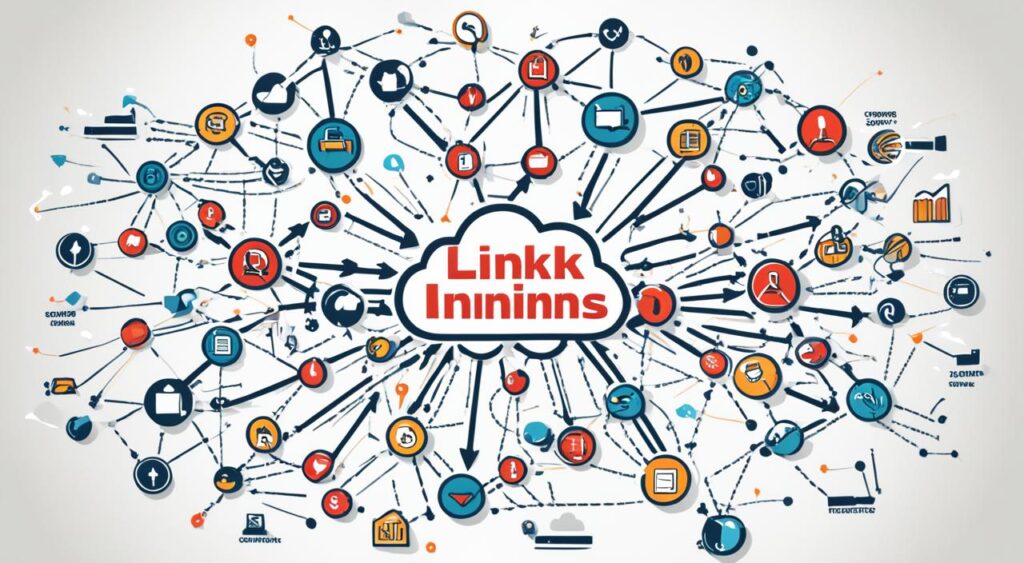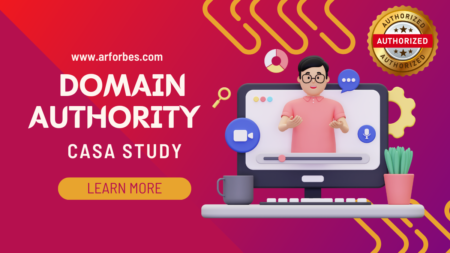In the bustling digital marketplace, your website is akin to a beacon that must shine brightly enough to be noticed by the meticulous algorithms of search engines. Picture walking down a crowded street lined with stores; it’s the well-signaged, inviting doorway that tempts you to step in, isn’t it? That’s exactly what On-page SEO does; it optimizes your website content, turning it into that inviting doorway into your virtual storefront. SEO best practices are not just the signboards, but also they make sure that every nook and cranny of your website is navigable and appealing, both to your audience and to the intricate minds of search engines.
With the skillful mastery of On-page SEO, you’re essentially translating your website into a language that search engines love. The effort you put into perfecting page titles, meta descriptions, and content optimization echoes in the halls of the internet, leading your site to emerge as a leading voice amidst whispers. Ultimately, by learning to craft and optimize website content with precision, you are setting yourself up for measurable online success.
Key Takeaways
- Grasping On-page SEO is critical for boosting visibility and search engine rankings.
- Employing SEO best practices ensures that your website speaks the language of both search engines and potential customers.
- Optimizing content is about making your site more than just present; it’s about making it prominent and preferable.
- Strategic On-page SEO efforts lead to an inviting and user-friendly website, akin to an enticing storefront on a busy street.
- Effective optimization hinges not just on content but also the technical aspects that make your site comprehensible to search algorithms.
The Importance of On-page SEO for Website Success
On-page SEO lays the cornerstone of your site’s relationship with search engines and visitors alike. Understanding its multifaceted role is essential in harnessing the full potential of your online presence. We delve into key components: meta tags optimization, an internal linking strategy, and user-friendly navigation—all of which coalesce to drive your digital success.
Understanding the Role of On-page SEO
At the heart of on-page SEO lies meta tags optimization, a critical element that communicates to search engines what your webpage is about. Meta tags are metadata elements placed within the head section of your HTML page and play a pivotal role in ranking algorithms. Well-crafted tags lead to improved understanding and categorization of your content by search engines.
How On-page SEO Impacts Search Engine Rankings
An internal linking strategy not only guides your users through your website’s content but also empowers search engines to crawl your site more effectively. Strategic link placement ensures that search spiders index your site thoroughly, facilitating enhanced visibility and potentially leading to higher rankings.
| Internal Linking Element | Benefit to SEO |
|---|---|
| Anchor Text Optimization | Refines keyword relevance |
| Link Distribution | Equitable spread of authority |
| Navigation Links | Streamlines user and crawl pathways |
The Connection Between User Experience and On-page SEO
User-friendly navigation transcends mere aesthetics and ease—it directly informs search engines on the quality of your website, significantly affecting your SEO performance. Simplified navigation leads to longer dwell times, lower bounce rates, and, ultimately, a more favorable evaluation from search engine algorithms.
- Logical site structure enhances user engagement
- Intuitive menu layouts promote content exploration
- Seamless navigation improves overall site metrics
Optimize Your Titles and Meta Descriptions
The digital landscape is competitive, making it crucial that your website stands out in search engine results pages (SERPs). A foundational step to achieving this is through meta tags optimization, particularly focusing on title tags and meta descriptions. These elements are pivotal because they provide a sneak peek into the content of your webpage, influencing user engagement by affecting click-through rates (CTR).
When you optimize website content, starting with the title tag is vital. It should be concise, no more than 60 characters, incorporating your main keyword, ideally towards the beginning. A well-crafted title tag aligns with the user’s search intent and can dramatically increase your site’s visibility.
Meta descriptions, while not a direct ranking factor, serve as a 160-character sales pitch for your content. Including a clear call-to-action and integrating relevant secondary keywords can entice users to click on your link. The goal is to accurately summarize the page content and convince potential visitors that your page is exactly what they’re looking for.
- Review your titles and descriptions for uniqueness and relevance
- Ensure they reflect the content of each page, using targeted keywords
- Avoid duplication, as unique meta tags help in distinguishing your pages
- Consider the user’s query and how your content provides a solution
- Regularly update meta tags to keep them fresh and aligned with current content
To further illustrate, let’s examine some best practices in action:
| Element | Best Practice | Example |
|---|---|---|
| Title Tag | Use precise keywords; Keep under 60 characters | ‘Ultimate Guide to Healthy Eating – Nutrition Tips’ |
| Meta Description | Include a concise summary; Add a call-to-action | ‘Discover the path to a healthier you with our expert nutrition tips. Start your journey today!’ |
These strategic adjustments to your title tags and meta descriptions are a potent part of on-page SEO. They can significantly propel your website to the forefront of SERPs, enhancing your online visibility and potentially driving increased traffic to your site.
Remember, the ultimate aim of optimizing these meta tags is to optimize your website content for better engagement and to provide value to your audience. So take the time to craft these carefully and watch how they can transform your online performance.
On-page SEO: Crafting Content for Both Users and Search Engines
To excel in the art of on-page SEO, it’s essential to balance the needs of both your audience and the search engines that will index and rank your content. By optimizing website content effectively, you not only satisfy user queries with relevance and quality but also cater to the algorithmic preferences of search engines. In the next few sections, we’ll uncover the techniques that will transform your content into an SEO powerhouse.
Writing Compelling and Relevant Content
Understanding that the core of on-page SEO is relevance and value is paramount. When you write content that answers the questions your audience is asking, you’ve taken the first step towards optimizing your content. Relevance is rewarded by search engines, but it’s the compelling nature of your content that will keep users engaged. Combining informative content with an engaging delivery ensures that visitors stay longer on your pages, reducing bounce rates and signaling content quality to search engines.
Incorporating Targeted Keywords Strategically
The strategic inclusion of targeted keywords is the cornerstone of on-page SEO. Keywords act as signposts for search engines, helping them understand the topic of your content and align it with users’ search queries. To optimize your content, aim for a natural integration of keywords, refraining from the outdated practice of keyword stuffing which can harm your SEO. Instead, focus on a balanced use of keywords in your headers, title, metadata, and main content, always prioritizing reader comprehension and natural flow.
Utilizing Heading Tags to Structure Your Content
Heading tags are the scaffolding of your content structure. They provide both users and search engines with clear signals about the hierarchy and distribution of your content. Starting with a compelling H1, which encapsulates the main topic, you should break down your content into sections with H2, H3, and so on, each addressing a specific subtopic or point. This organized approach not only boosts readability for your visitors but also assists search engines in indexing the key elements of your content effectively.
Enhance Your Website Structure with Internal Linking
An internal linking strategy is not merely a detail in the grand scheme of website design; it is a pivotal element that fortifies the navigational flow and information hierarchy on your website. By deliberating on how you link content internally, you can improve user experience and simultaneously send signals to search engines to help them understand the importance and relationship between pages.

The Basics of Effective Internal Linking Strategy
Understanding the basics of internal linking starts with recognizing that every link serves as a pathway to another page, and this connection is a silent guide that leads both users and search engine crawlers through your site’s topology. Internal links make content discoverable and distribute page authority across your domain.
Anchor Text Best Practices for SEO
Choosing the right anchor text for internal links is critical. Anchor text signals to visitors and search engines what to expect upon clicking a link. It is advantageous to use descriptive, keyword-rich yet concise phrases that align with the target page’s content.
Using Internal Links to Boost Page Authority
Wisely distributed internal links can empower underperforming pages by sharing the authority of stronger pages. When high-authority pages on your website link to pages that need a boost, they share ranking power and help enhance visibility in search engine results.
| Page with High Authority | Lesser-known Page Needing a Boost | Result of Strategic Internal Linking |
|---|---|---|
| Your best ranking service page | A detailed but underperforming guide or article | Improved visibility and ranking potential for the lesser-known page |
| Popular product category page | New product page with limited exposure | Increased traffic and user engagement on the new product page |
| Homepage with strong incoming links | Blog page with valuable content | More evenly distributed page authority leading to a stronger overall domain |
Maximizing User Engagement with User-Friendly Navigation
Understanding that user-friendly navigation is a pivotal element of website design is more crucial than ever. As the digital landscape becomes increasingly mobile-dominated, incorporating a mobile-friendly design is not just an advantage—it’s an imperative. Google’s shift towards mobile-first indexing underscores the necessity of having a navigation system that is intuitive and responsive on all devices.
Good navigation should seamlessly guide your visitors through your site’s content, much like a road map. It is your task to ensure that this process is as effortless as possible, thereby enhancing user engagement, satisfaction, and retention. Let’s delve into the principles that can help you construct an optimal navigational structure:
- Clarity is key: Make sure that menu items are clearly labeled, avoiding ambiguity and confusion.
- Consistency matters: Maintain uniform navigation across all pages so users don’t have to re-learn how to get around.
- Conciseness avoids overload: A navigation menu should be succinct, with no more than seven items to prevent cognitive overload.
- Categorize logically: Group related items under common parent menus for a cleaner, more organized look.
- Accessible for all: Ensure that your navigation is ADA-compliant, catering to all users regardless of ability.
Moreover, integrating a mobile-responsive design is a task that pays dividends, not only in user satisfaction but also in your site’s performance in search engine rankings. Below is a comparative table that delineates the features of both mobile-friendly and non-mobile-friendly website navigation:
| Feature | Mobile-friendly Design | Non-Mobile-friendly Design |
|---|---|---|
| Screen Adaptation | Fluid layouts adapt to different screen sizes | Static layouts can look broken on smaller screens |
| Menu Accessibility | Hamburger or dropdown menus for space efficiency | Traditional horizontal menus that require zooming |
| Touch Controls | Touch-friendly interfaces with larger tap targets | Small clickable areas not optimized for touch |
| Load Times | Faster loading times with optimized images/media | Slower load times due to non-optimized content |
| Readability | Text scales appropriately for readability on small screens | Text may be too small to read without zooming |
Remember, the goal of your website’s navigation is to present your content in an organized, accessible, and coherent manner. By prioritizing user-friendly navigation and mobile-friendly design, you are not only looking out for your users but also setting your site up for favorable treatment from search engines. This dual focus will undoubtedly lead to enhanced user engagement and a more substantial online presence.
Optimize Visual Elements: Image Optimization Explained
As the digital landscape becomes increasingly mobile-dominated, the importance of image optimization and a mobile-friendly design cannot be overstated. Not only do optimized images ensure your site remains aesthetically pleasing across all devices, but they also play a crucial role in improving website performance. Let’s explore how you can enhance your visual content for better SEO results.

Firstly, image optimization makes your website faster, ensuring that pages load quickly, which is a vital aspect of user experience—especially on mobile devices. Faster load times also positively impact your site’s SEO, as search engines prioritize sites that provide a better user experience. This includes making certain your images are web-ready and properly formatted.
To start implementing effective image optimization, consider the following table which outlines the various aspects to take into account:
| Criteria | Method | Benefits |
|---|---|---|
| File Format | Choose the right format (JPEG, PNG, WebP) | Reduces file size without losing quality |
| Compression | Use tools to compress image files | Minimizes HTTP requests and improves load times |
| Responsive Images | Implement srcset attribute for multiple device compatibility | Ensures images look sharp on all screens and devices |
| Descriptive Alt Text | Add informative alt text to images | Improves accessibility and context for search engines |
| Image Sizing | Scale images appropriately for the web | Prevents unnecessary scaling and preserves quality on various devices |
Note that the benefits of image optimization extend to both the user and the search engines. An image that is appropriately formatted and compressed takes up less bandwidth, reducing load times significantly.
By focusing on both image optimization and mobile-friendly design, you ensure a robust and SEO-enhanced visual strategy. This not only brings about an immediate boost in page performance but also lays the groundwork for sustained success in your on-page SEO endeavors.
Conclusion
As we draw this guide to a close, it’s imperative to recall that the essence of a successful digital presence lies in a well-implemented On-page SEO strategy. The techniques and insights shared here lay the foundation for enhancing search engine visibility and user experience. Mastering On-page SEO is not a one-time task, but a continuous journey that requires dedication, precision, and an acute awareness of the evolving digital landscape.
Recap of On-page SEO Best Practices
Throughout this article, we’ve emphasized the crucial nature of SEO best practices, such as optimizing title tags, meta descriptions, and ensuring the creation of content that serves the dual purpose of informing users and satisfying search engine algorithms. A diligent application of these essentials can significantly boost your website’s performance, but remember, consistency is key to staying relevant in search engine rankings.
Final Tips for On-going On-page SEO Efforts
To maintain and improve your On-page SEO, regularly audit your site, keep an eye on performance analytics, and update your content to meet current standards. Align with the benchmarks set by leading search engines and refine your strategies accordingly. Your efforts will not only improve your site’s health but also provide a better experience to your users, ultimately reflecting in your online success.
Encouragement to Stay Updated with SEO Trends
Finally, in a field as dynamic as SEO, staying informed about the latest trends and algorithm changes is critical. By anticipating and adapting to these changes, you position yourself to gain a competitive advantage. Keep educating yourself, engaging with the SEO community, and integrating new techniques to ensure that your On-page SEO strategy remains cutting-edge and effective.
FAQ
What is On-page SEO and why is it important?
On-page SEO refers to the optimization of website elements like content, meta tags, images, and URLs that help search engines understand and rank your site effectively. It’s important because it improves your website’s visibility, helping it to appear in relevant search results which can lead to increased traffic and conversions.
How does meta tags optimization benefit my website?
Optimized meta tags, including title tags and meta descriptions, provide search engines with concise information about the content of a page. They play a key role in influencing click-through rates from the search engine results pages (SERPs) because they give potential visitors a preview of what to expect on your site, therefore attracting more qualified traffic.
Why is an internal linking strategy important for my website?
An internal linking strategy helps to establish a hierarchy of information on your website and makes it easier for search engines to crawl and index your pages. By linking relevant pages together, you can distribute page authority, improve user navigation, reduce bounce rates, and ultimately enhance your website’s SEO performance.
How does optimizing my website content for mobile affect SEO?
With the shift towards mobile-first indexing by search engines like Google, having a mobile-friendly website is crucial for SEO. A mobile-optimized site ensures a better user experience for people on mobile devices, which can lead to increased engagement, reduced bounce rates, and improved search rankings.
What is image optimization and how does it impact SEO?
Image optimization includes reducing file sizes, choosing the correct formats, and providing descriptive file names and alt tags. This process helps to improve page load times, enhancing user experience. Faster-loading pages are more likely to rank higher in the SERPs because page speed is a factor considered by search engines when ranking sites.
How can I ensure my website is easy to navigate for users and search engines?
To create a user-friendly navigation structure, organize your site’s content into logical categories that are easy for users to understand and follow. Make sure that your menus, page links, and sitemaps are clear and consistent. This not only helps users find information quickly but also allows search engines to index your content more effectively.
Can you explain the role of page authority in internal linking?
Page authority is a metric used to predict how well a specific page will rank in the search engine results. By using internal links, you can help distribute this authority throughout your website, which can increase the ranking potential of other pages within your domain. A careful internal linking approach ensures that both high and low authority pages on your site support each other’s SEO performance.
What are the best practices for writing compelling and relevant content?
To write content that resonates with both users and search engines, focus on understanding and answering user queries, incorporate targeted keywords naturally, provide value with in-depth analysis or unique insights, and structure your content using heading tags for better readability.
How do I stay updated with SEO trends?
Staying updated with SEO trends involves regular research, following authoritative SEO news sources and blogs, attending workshops and webinars, and participating in industry forums. It’s also beneficial to experiment with new strategies, analyze your SEO performance, and adapt to changes in search engine algorithms.










